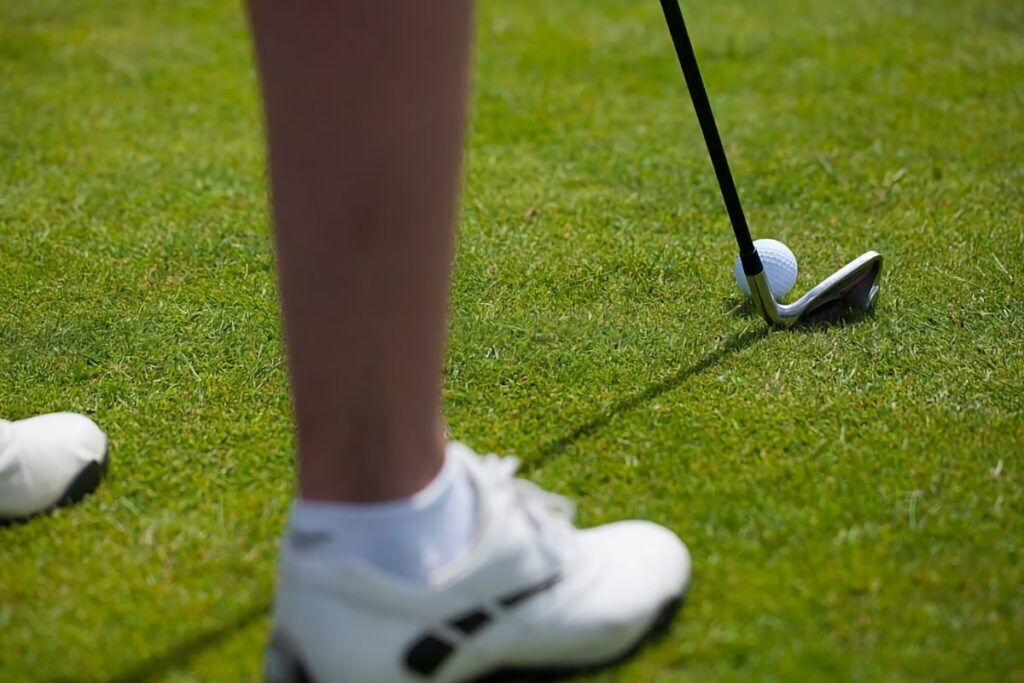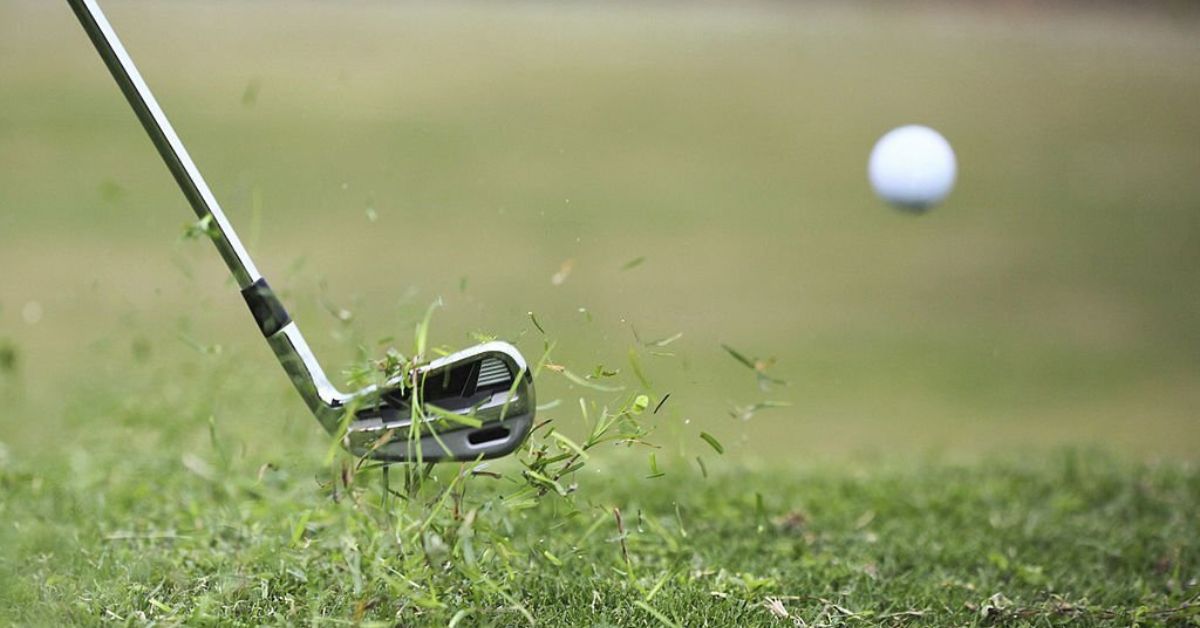The shank is one of the most humiliating shots in golf. Just when you feel as though you are on top of your game, shanks can creep up and wreak havoc on your progress.
If you’re shanking irons all of a sudden, you’ve come to the right place!
In this article, you’ll learn precisely what causes the dreaded shank. Furthermore, I’ll give you simple fixes to help you start hitting pure irons shots — and avoiding the hosel.
Shanking Irons All of a Sudden
If you’re shanking irons all of a sudden, you are probably leaning too far over the ball during the swing. This causes you to strike the hosel, and not the center of the clubface. To fix this, stand taller and keep your weight in the middle of your feet.
What is a Shank in Golf?
In golf, a shank occurs when you strike the ball with the hosel of the club — where the club head connects with the shaft — almost missing the clubface entirely. As a result, the ball shoots right and travels very little distance.
As a beginner golfer, it can be hard to know exactly where you’re striking the ball on the clubface. Usually, there will be a visible ball mark on the hosel if you’ve shanked it, and you will likely feel more vibration through the club in your hands.

What Causes a Shank in Golf?
Frustratingly, shanks will happen out of nowhere, and can seriously ruin your confidence on the course. So, before we jump into the fixes — what actually causes a shank in golf?
Sometimes, shanks happen when you take the club too far inside on the backswing, with an over-the-top swing path. While swinging from the inside is useful if you are frequently hitting the toe of the club, you want to do the opposite if you are shanking the ball.
However, shanks usually happen when your weight is too far forward — on the balls of your feet or your toes. This cause your balance to shift mid-swing, and the club head can move away from your body at impact — exposing the hosel.
Why Am I Shanking My Irons?
Typically, amateur golfers are more likely to shank short irons and wedges than any other club in the bag. This is because you’re more likely to want to lean forward with a shorter club, causing your weight to be too far forward as mentioned above.
Read on to learn how to solve this issue with 3 simple fixes, so you will never have to worry about hitting a shank again!

How to Stop Shanking Irons
Often, amateur golfers start shanking their irons because they are leaning too far over the ball during the swing. This causes the club head to shift forwards, and the ball is more likely to be struck by the hosel than the center of the face — resulting in a shank.
Essentially, this issue can be broken down and addressed by 3 simple fixes:
- Stand taller in the setup
- Keep weight in the middle of your feet
- Swing around, not vertically
Let’s take a look at each fix in a bit more detail, and get you striking pure iron shots.
1. Stand Taller in Your Setup
Firstly, many golfers lean too far over the ball at address — especially with shorter irons and wedges — causing the club head to move forwards. While this may only move the club head forward by just a few inches, it’s enough to result in a hosel strike.
Instead, crouch down with a slight bend in the knees and hips, rather than leaning forwards and over the ball. This keeps you balanced, providing you with a stronger chance of finding the center of the clubface.
To achieve this setup, you might have to lift the club up slightly more than you would usually. This makes the club longer, to accommodate the taller posture.
PRO TIP: To check if your posture is correct, make sure your chest is pointing more forwards and above the ball, and not directly at the ball.
2. Keep Weight in the Middle of Your Feet
Secondly, many amateurs make the mistake of setting up with their weight on their toes, or the balls of their feet. Once again, this has the effect of moving the club head further away from the body, exposing the hosel and risking a shank.
Instead, keep your center of mass in the middle of your feet. This gives you a solid base to perform the swing, without pushing the club head forwards and away from the body.
PRO TIP: Imagine your center of gravity falling beneath your laces, rather than at your toes or the balls of your feet.
3. Swing Around, Not Vertically
Finally, it’s time to talk about the swing itself. Usually, when you find yourself crouching too far forwards — with your weight in your toes — the resulting swing arc is too vertical.
Instead, the club should swing around the body — not vertically. This swing path allows the clubface to strike the ball squarely, reducing the risk of exposing the hosel.
PRO TIP: On the backswing, feel your weight shift to the heel of your back foot. On the downswing, shift the weight to the heel of your front foot. This encourages the sensation of swinging around, not vertically.
Check out the video below by Paul Wilson, where he demonstrates these solutions:
Conclusion
In summary, amateur golfers often find they’re shanking their irons all of a sudden due to crouching too much over the ball, causing the club head to shift forwards in the swing.
To fix this, focus on these 3 simple fixes:
- Stand taller in your setup
- Keep weight in the middle of your feet
- Swing around, not vertically
With these solutions, your balance, stability, and swing plane will improve. This reduces the risk of exposing the hosel — preventing the dreaded shank!


